From its whimsically knobby roots (commonly referred to as “hands”) to its powerfully peppery flavor, ginger is a jewel in the kitchen.
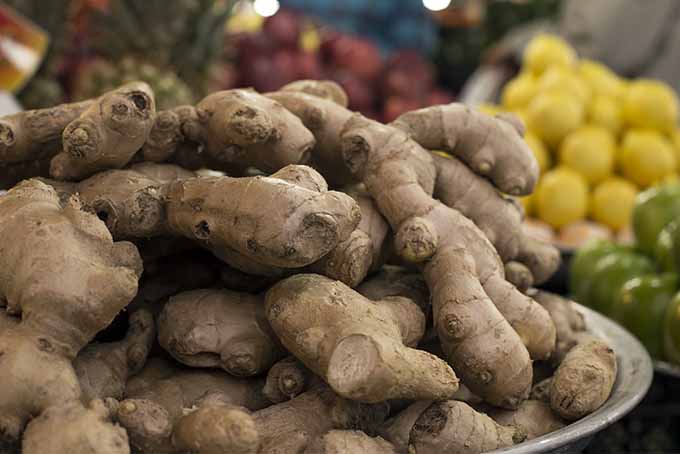
As a mighty superfood and delicious warming spice, it is a natural medicinal ingredient that may aid in battling inflammation, nausea, and other ailments. And it also has many culinary uses that render it one of the most versatile spices available, which includes its use in both cooking and baking (Think of wonderful, warm gingerbread or even a gluten-free equivalent!)
If I can make it to the marketplace in Chinatown early in the morning and haggle with the woman behind one of the stands to get a bunch for a buck or so a pound, I will stock up on a tote bag full of them.
But a simple question remains:
How do you handle these hands?
Keep reading to learn the best ways to choose, prep, and store one of Foodal’s favorite roots!
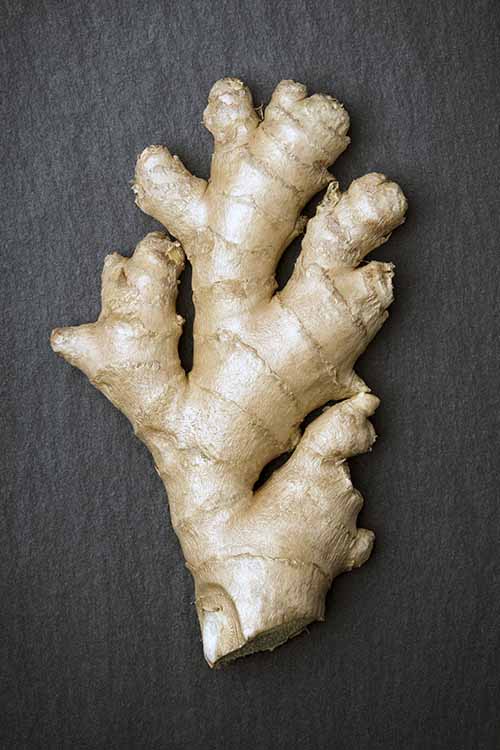
How to Choose the Best Ginger
OK, you got us. Ginger is technically a rhizome, which is really a stem, but it’s often referred to as a root since it grows underground. For our purposes, we’ll go with the common usage when the mood strikes, and occasionally use these interchangeably.
The next time you are shopping for some zesty rhizomes, there are certain sensory qualities you should be looking for in order to pick the best product.
Overall, you should look for pieces that are firm, plump, and dry. It will have rough, papery, brown skin, but should not have exhibit too many major defects on the surface like bruises or mold.
To get the most out of your purchase, find a piece that has a larger area of flesh without too many narrow, knobby fingers. It is more difficult to peel the skin from very skinny pieces, and you’ll end up with more in your dump bowl than for your recipe.
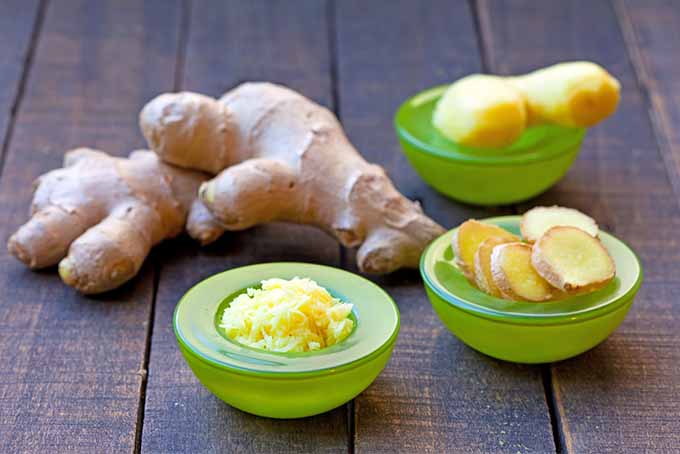
Remember to follow these guidelines while you’re shopping:
Don’t buy if:
- The skin looks wet and moldy
- The skin is significantly bruised, shriveled, and discolored
- The hand has too many small, narrow, knobby fingers
- It feels soft or mushy when you squeeze it
Definitely buy if:
- The skin is a solid brown color with minimal defects
- The skin looks dry and fresh
- The hand has large, plump pieces
- It feels firm when you squeeze it
How to Store at Room Temperature
With its thin, bark-like outer skin, ginger can withstand room-temperature storage far longer than many other fresh fruit or vegetable products. Room temperature storage is a good method if you plan to use it right away, or within a week.
Leave the rhizome as is with the skin on, and place it on a plate or in your fruit bowl on your countertop, away from direct sunlight. It will keep for about a week before it begins to soften and show signs of aging.
Once this happens, we recommend using refrigeration or keeping it in the freezer for more long-term storage. Keep reading below to learn about these methods.
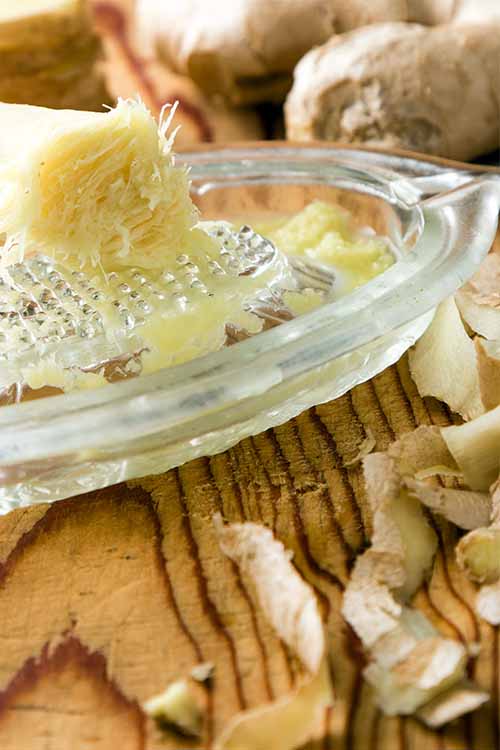
Refrigerator Storage Tips
For optimal refrigerator storage, it is best to leave the whole piece intact and remove pieces as needed.
Store whole pieces in a resealable bag, being sure to squeeze out all of the extra air. It will keep in the fridge for well over a month.
Freeze Your Rhizome for the Long Term
For longer periods, ginger can be stored in the freezer. For optimal storage and convenience, we recommend washing, peeling, and cutting it into large segments about 1 or 2 inches long.
Place in an airtight freezer bag in a single layer – this will help to prevent the pieces from sticking together. Blotting the cut and peeled pieces dry before placing them in the bag will help to prevent ice crystals from forming on the outside. Ginger can be frozen for up to 6 months.
When you are ready to use it in a recipe, take out a chunk and let it thaw at room temperature on your cutting board before you slice it.
Frozen ginger can also be grated easily without needing to thaw it first. When you are ready to incorporate into a recipe, simply take a prepped segment out of the freezer and grate as much as you need for your recipe, using a microplane, cheese grater, or ginger grater.
I personally like using a fine microplane. This will finely shave the frozen piece, enabling you to literally dissolve it into a dish for the best distribution of flavor.
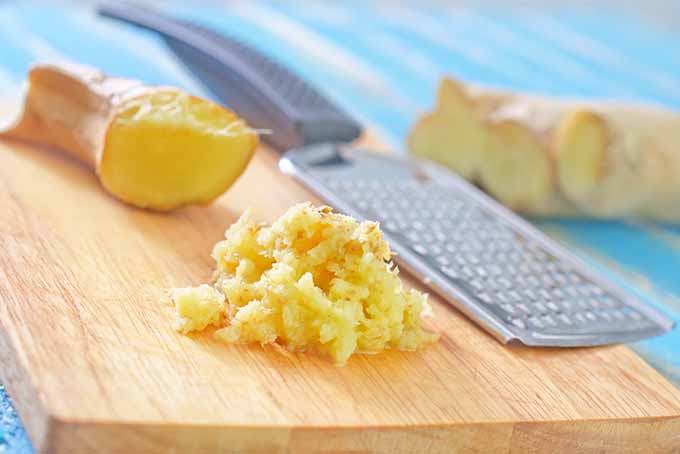
Storing in Alcohol – Worth It?
Freshly peeled ginger can also be stored by submerging it in alcohol, such as vodka or sherry, or in an acidic liquid like lemon or lime juice.
The high alcohol content and high acidity level helps to preserve the fresh root for a longer period of time.
I personally do not recommend this method, as the flavor of the liquid will infuse into the ginger, altering its taste and texture.
Unless you are making an infused liquor with the intention of extracting the ginger flavor (hello, happy hour cocktail idea!) I would stick to the other storage methods provided.
Prep Tips
Once you slice into a fresh hand and the inner flesh is exposed, you can no longer store it at room temperature.
You can, however, prep the rest for freezer storage, or cover the exposed area tightly with plastic wrap to limit continued air exposure, and place it in a resealable bag in the refrigerator.
It is much easier to peel when young, preferably within a week after you buy it. The flesh will continue to soften as it ages, adhering to the skin and making it more difficult to peel off.
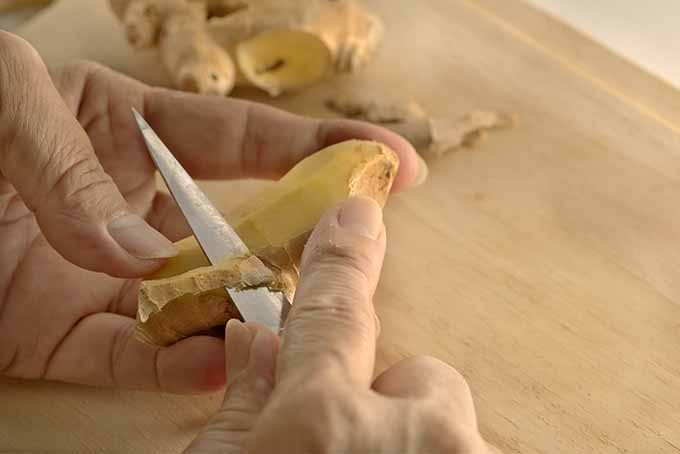
I just ran into this problem the other day, prepping for my stir-fry. I found a lone hand (whose date of purchase was questionable… forgetful me!) in the very back of the fridge and spent the next toilsome half hour trying to peel it.
Trust me. Peel it sooner rather than later.
The Best Tools for Peeling
Ask a group of people what their favorite tool is for peeling ginger, and I’m sure you’ll get a variety of answers:
The back of a chef’s knife, a vegetable peeler, a spoon, a small paring knife… the list goes on and on!
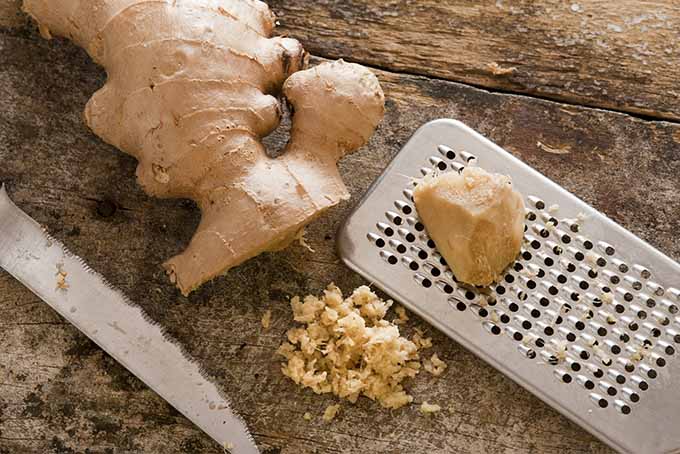
Each individual tool is great, but I think the best technique is to actually utilize a trio of tools to get the most effective cleaning accomplished: a chef’s knife, a vegetable peeler, and a spoon. These are the Three Musketeers of ginger prep.
For the initial cleaning, use a knife to cut off large pieces, remove dried-out ends, and slice away any small nubs that cannot be used.
For the pieces with a large area of skin, use a vegetable peeler.
For the smaller, tough spots that are too tiny for a vegetable peeler, use the tip of a spoon to scrape these often troublesome areas.
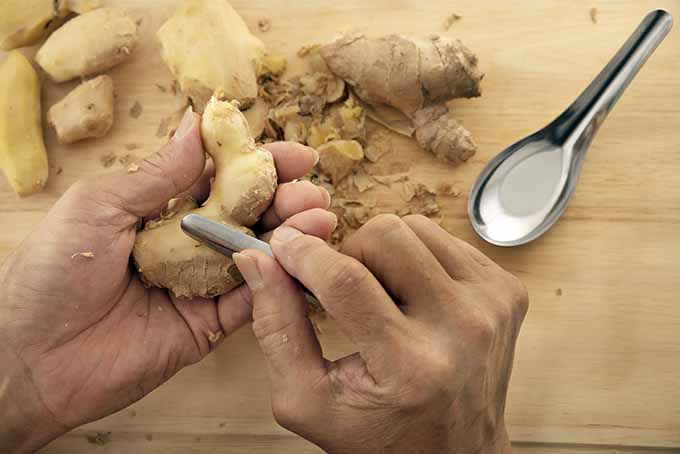
The Best Way to Prep the Whole Rhizome
The following method is best way to efficiently to peel a whole hand, to get the most yield with the least amount of stress:
1. Wash under water and pat dry.
2. With a knife, slice off the dried end pieces and any tiny protrusions that will be too small to use.
3. With a knife, divide the whole hand into pieces of roughly equal size, suited to your cooking purposes.
4. Peel each section.
5. Use as you wish!
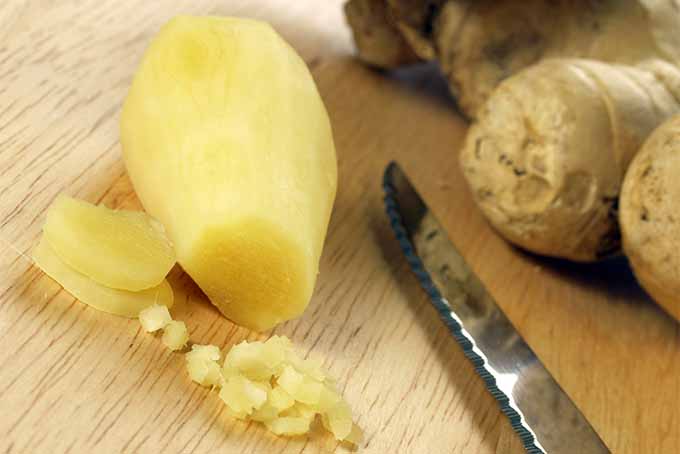
And We’re Ready for Rhizome Recipes!
Now that you know all about how to shop for, prep, and store this soothingly spicy plant, have fun using it in a variety of recipes. To get you started, try our fresh papaya ginger smoothie for a creamy, refreshing beverage with a little bit of a kick.
We also love it in hot beverages, like our hot and foamy ginger tea latte!
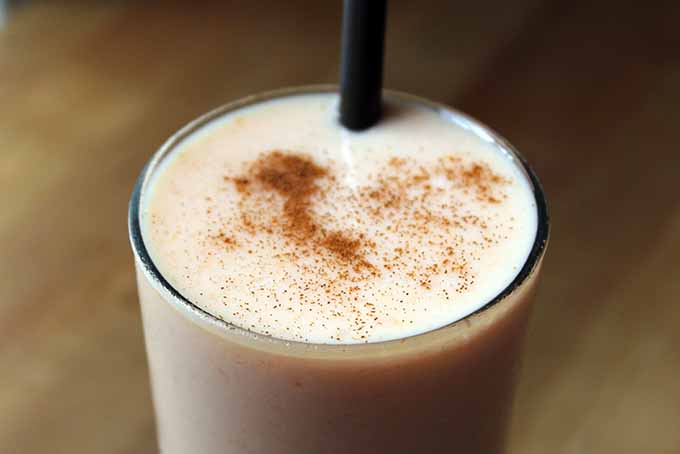

Looking for something savory? Try our easy sausage fried rice with garlic and ginger!
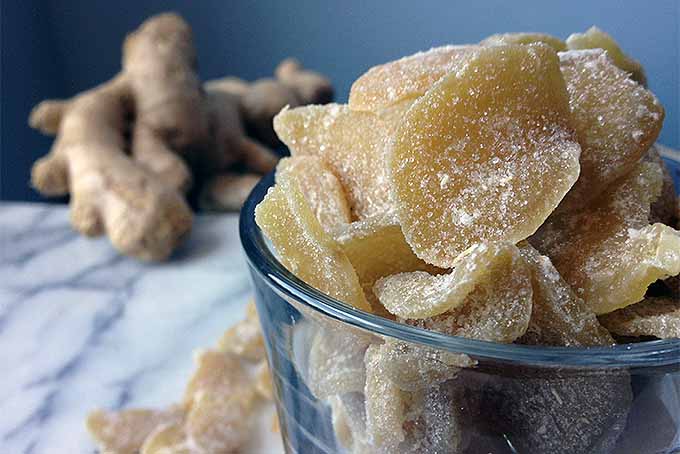
We would love to know how you like to store and prepare this root. Do you have a favorite method of peeling that we didn’t mention? Post your comments below!
The staff at Foodal are not medical professionals and this article should not be construed as medical advice. Foodal and Ask the Experts, LLC assume no liability for the use or misuse of the material presented above. Always consult with a medical professional before changing your diet, or using supplements or manufactured or natural medications.
Photo credits: Shutterstock unless otherwise noted.
About Nikki Cervone
Nikki Cervone is an ACS Certified Cheese Professional and cheesemonger living in Pittsburgh. Nikki holds an AAS in baking/pastry from Westmoreland County Community College, a BA in Communications from Duquesne University, and an MLA in Gastronomy from Boston University. When she's not nibbling on her favorite cheeses or testing a batch of cupcakes, Nikki enjoys a healthy dose of yoga, wine, hiking, singing in the shower, and chocolate. Lots of chocolate.

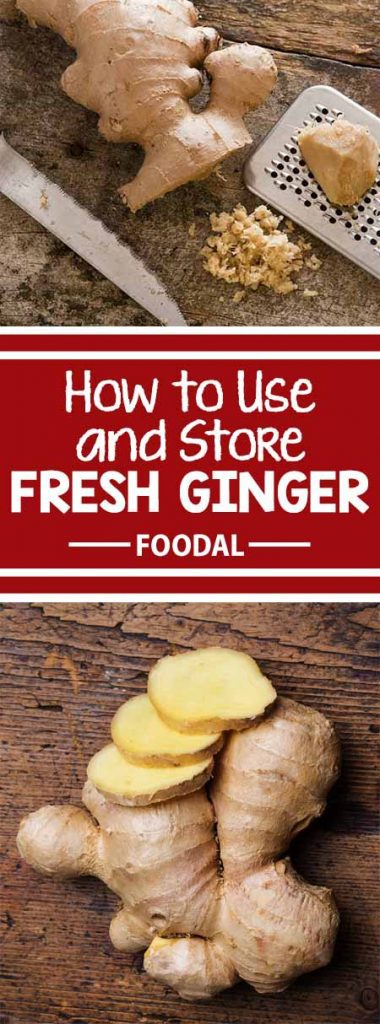
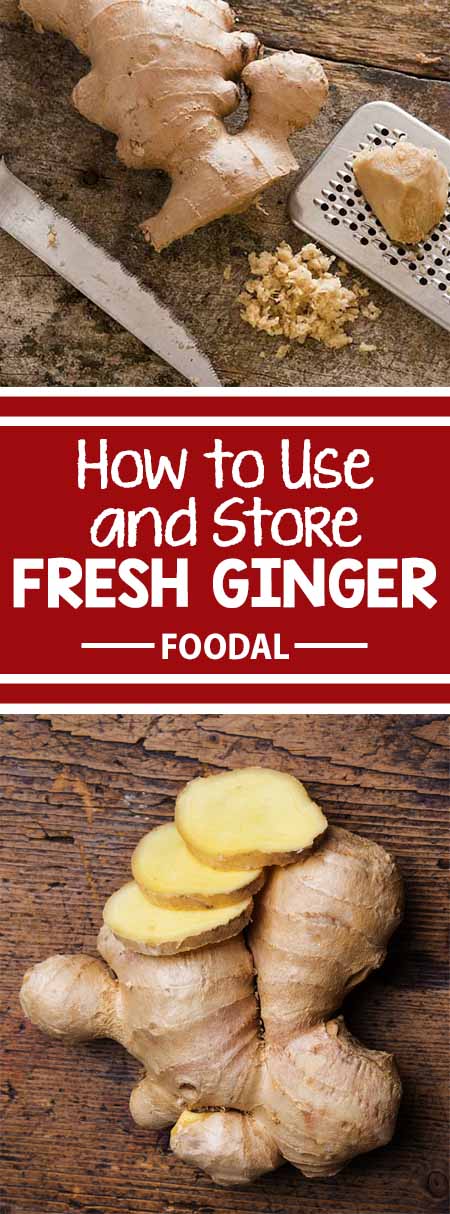

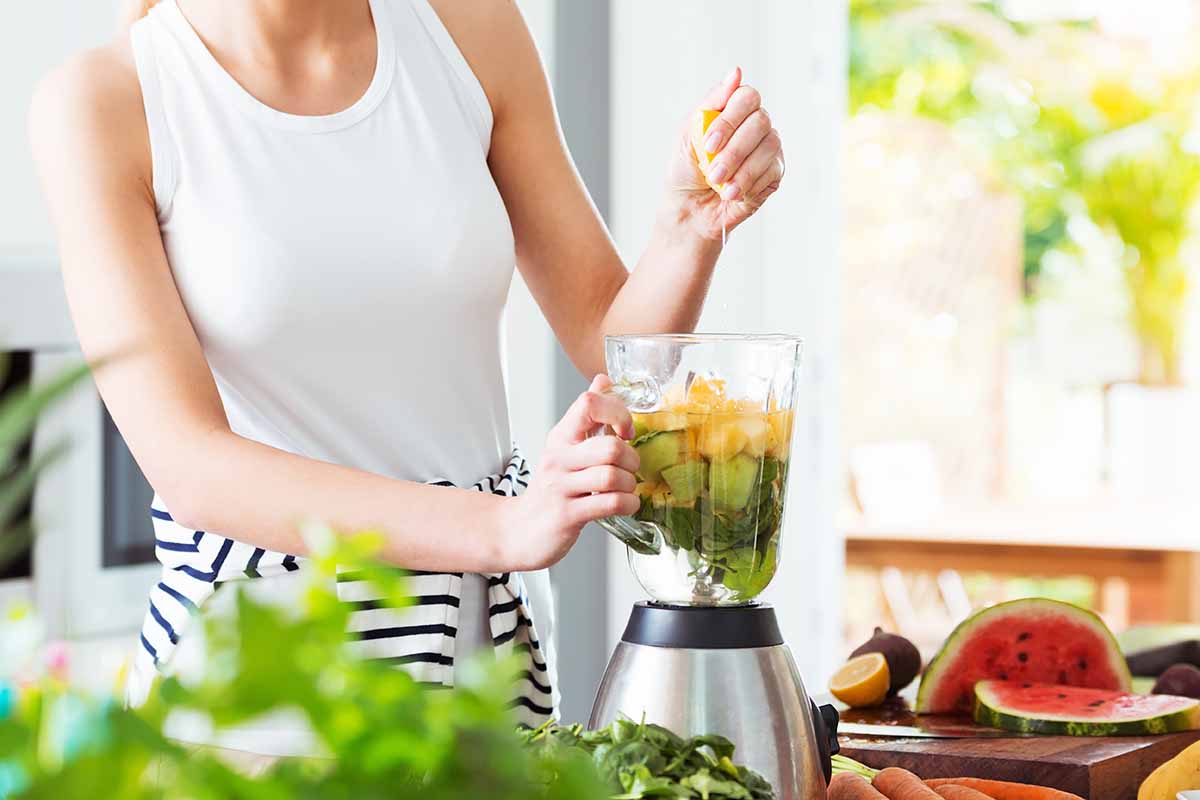

I for one, have never liked ginger. Not only has this opened my my mind, but I can share this knowledge with my sister! She is ginger crazy! I am more of a garlic person.
I love fresh ginger and this is a good guide to buying and storing it. Fresh ginger has such a nice lemony fragrance and bite that you can’t get from dried ginger. So I like to put it in rice and tea and turkey and anything that lemon would go with. Crystallized ginger is also one of my favorite candies! I used to like gummy bears etc. as a kid and as an adult I try to avoid all the stuff with corn syrup and artificial colors etc. so candied/crystallized ginger is something I thoroughly enjoy.
Every morning without fail a cup of ginger tea!
Glad to know that storing at room temperature is fine. I’ve been doing this and wasn’t sure if it was the right or not. I also store in the refrigerator too when I know I’m not going to use immediately, but I never knew that ginger could be frozen. Now that I know that it can be frozen, I’ll be using this method from time to time.
Having it fresh and on hand certainly does make a difference, and the dried stuff or other forms sometimes just doesn’t cut it. I am also glad to see that room temperature is just fine, and I had went ahead and assumed that but it is always good to get confirmation. The best part, though, is that it always helps ease my stomach which means that I can experiment a little more with some spicy foods and have that balance back.
I was also worried that room temperature wouldn’t be okay for ginger but it seems like it’ll hold up just fine, most of the time I store it in the fridge in a sealed package and rip off some when needed. As for peeling, I’ve always used a potato peeler and it seemed to work just fine. When I’m lazy I just pick up a knife and do the job.
I think it really depends on the humidity of where you live. I never can keep mine at room termperature for more than 2-3 days without it starting to change. On the plus side, where I live it is so cheap that I don´t mind a little loss, but I still usually put it in the fridge right away unless I know I am going to cook with it the same day or next day.
In my country ginger = Christmas. I remember when I was in high school, all Fridays on December, the school gave away to the students a cup of ginger tea. It’s one of my happiest memories regarding school, because everyone was so jolly due to the season. This is the main reason why I get major cravings of ginger tea, but I never do it for myself because when I tried to store it, I never really suceded. Your post are always so informative, and I don’t know why, it feels every once in a while they are talking to me directly. Keep up the good job!
My parents use ginger in most of their cooking and they keep it in a cool dark place and sometimes when it is chopped in the fridge. They don’t usually peel it, but slice it finely and then use it to flavor dishes such as steamed fish or add it to vegetables.
It tastes much stronger when freshly cut and you only need a small amount too.
Thank you for sharing this.. I love ginger very much and i want to share a method of peeling ginger more fast and easier.. That is using a steel dish washer which is round made of steel usually ppl use to clean under the wok..
Hey, Bella! What a cool method of peeling! The skin is very thin and papery, so I’m sure this works well for you. I’ll give it a try the next time I’m cooking.
Do you have to peel fresh ginger before you use it? I don’t.
Hey, Mark! While you don’t necessarily HAVE to peel it, I prefer to. The skin serves as a protective barrier for the flesh, and doesn’t contribute to the flavor. By peeling the skin, you are exposing more surface area of that insanely delicious ginger flesh. And the thin, papery texture might not be enjoyed by eager eaters.
If you still decide to leave the skin on, be sure to thoroughly wash and scrub it to ensure cleanliness.
Hi. Do you peel it all before storing in fridge or freezer? Thank you
HELLO!
I love ginger!
When possible, I buy up peel and grate. Then portion it out by the tablespoon, freeze on parchment paper, when frozen, store in air tight container. Great for stir fry????
Ginger is super easy to grow – I literally stick a few knobs about three inches apart in a pot or one of those window planters (Inside in the winter, outside in the warmer months), cover with soil, water and wait. It takes about six months. Harvest when the leaves die back…
Hi Kim, it is not required to peel ginger before storing it in the fridge or freezer. It seems to stay fresh with or without a storage bag. I brush them with a vinegar spray, then rinse and let them dry over paper towels before storing in the fridge. Then I wrap it after cutting off a piece. Enjoy…
I prefer to not use plastic bags – can you store it in mason jars in the fridge or freezer?
Yes, certainly! But the problem with jars is that you will have some headspace that’s filled with air, and this can lead to ice crystals developing on the ginger and eventual freezer burn. Try to fill jars as full as you can, and make sure ginger is completely dry before storing in glass containers to prevent this.
I’ve never used ginger before, but decided to try it. Your site is awesome, and tells me all I need to know! 🙂 🙂
I’m telling ya, Carolyn, fresh ginger will become an ingredient you’ll want to use continually: grate a little in smoothies, add some to sautéed veggies, make homemade chewy ginger candies… it’s a staple that I use CONSTANTLY!
I use ground ginger every morning as a metabolic energy boost! It’s amazing!
1/2 tsp of fresh chopped ginger
1/2 tsp or pinch of cayenne pepper (depends on tolerance )
2 oz of coconut water
2 oz of orange juice (I just squeeze an orange)
Mix and enjoy. The ginger helps tame the cayenne but it’s a complete morning boost! Tastes soo good too!
I only peel if I use it in a recipe. But for my purposes, in a smoothie or making my own “tea,” peeling is unnecessary. I just scrub it clean with the Norwex vegetable cloth. Works great to get off any dirt and loose peel.